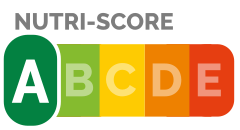We have used a number of Food & Ingredient Labels to help you make informed choices
Here are the definitions for these labels used. Most of these are sourced from leading Food universities, academia and websites.
 s growth from the “5 color score” to the “Nutri-Score” you see in supermarkets today.
s growth from the “5 color score” to the “Nutri-Score” you see in supermarkets today. In the report “The UN Decade of Nutrition, the NOVA food classification and the trouble with ultra-processing” (pdf, pdf), the authors advocate for the adoption of a system of grades from 1 to 4 to allow to simply compare the degree of processing of products. Research suggests a correlation between the cosumption of ultra-transformed foods and an increased risk of developing a cancer.
Some countries use the NOVA groups for their dietary guidelines or goals, for instance:

 Group 2. Processed culinary ingredients
Group 2. Processed culinary ingredients Group 3. Processed foods
Group 3. Processed foods Group 4. Ultra-processed foods:
Group 4. Ultra-processed foods:.
The Eco-Score is an environmental score (ecoscore) from A to E which makes it easy to compare the impact of food products on the environment.
 Why an environmental score? More and more consumers are concerned about the impact of their food not only on their health, but also on the health of our planet. Thanks to the Nutri-Score, it is now very easy to take into account the nutritional quality of products when purchasing, but it is very difficult if not impossible to compare their environmental footprint.
Why an environmental score? More and more consumers are concerned about the impact of their food not only on their health, but also on the health of our planet. Thanks to the Nutri-Score, it is now very easy to take into account the nutritional quality of products when purchasing, but it is very difficult if not impossible to compare their environmental footprint.
It is urgent to provide consumers with clear information about this environmental footprint, so that they can easily and quickly compare it for several products. This is what the Eco-Score environmental grade allows.
If you have any questions or suggestions about our content, feel free to contact us at bv@scangeni.us.
Food Scan Genius is an offering from ScanGeni Ventures Pvt Ltd, an ‘AI first’ company driving value for the next generation of consumers. Get in touch with us to learn more:
© 2024 All rights reserved by ScanGenius